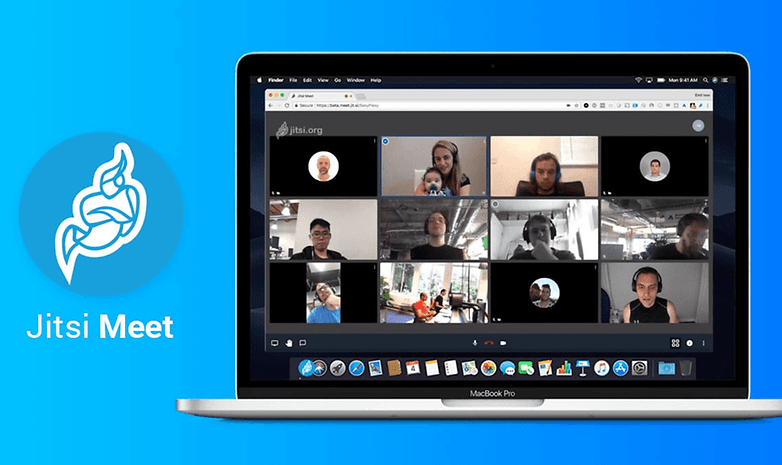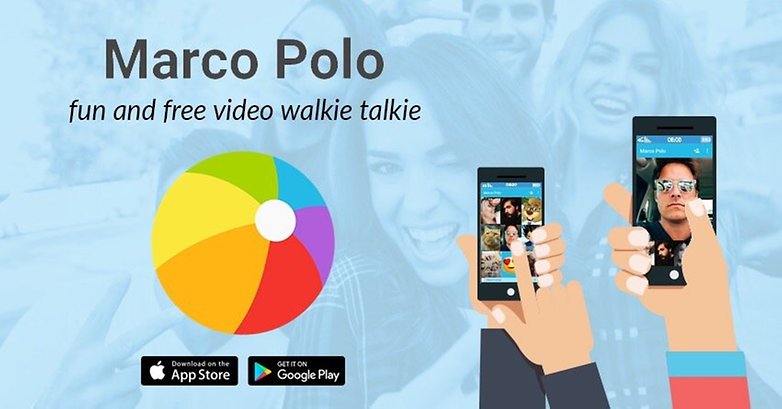The best free apps for group video calls
The best free apps for group video calls in 2021
| Editor’s Choice | Alternatives | For iOS | To save data | The lazy option | |
|---|---|---|---|---|---|
| App | Google Meet | WhatsApp/Telegram/Signal | FaceTime | Jitsi Meet | Marco Polo |
| Pros |
|
|
|
|
|
| Cons |
|
|
|
|
Take a shortcut
What are the criteria for a group video calling app?
For this selection, I distinguished the notion of group video calling from that of video conferencing. In concrete terms, I was interested in applications/software for making video calls with several participants at the same time. But the use is mainly personal and not professional.
So, the goal is not to advise you on the best tools to make your PowerPoint presentation in front of 50 colleagues in your department. No, we are talking about video calls with friends and family to simply check in. That’s why I’m not necessarily going to talk about Zoom or Microsoft Teams, for example, which could be the subject of another dedicated selection.
As for my criteria, I focused on several elements: the free nature of the applications, the number of participants it is able to gather in the same video call, the limitations of the free version (limited time, etc.) and its compatibility with other applications.) and its compatibility with different types of devices and OS.
Another criterion is popularity. I certainly won’t include only the top apps in this selection. But to be relevant, a group video calling solution must be used by a sufficient number of people. So don’t be too upset if I left out apps like Viber or Google Duo.
Finally, I took into account a minimum level of protection of your personal data and encryption of conversations. That’s why I didn’t include solutions like Facebook Messenger or Houseparty, for example.
Google Meet for those who have a Google account

Notice |  |
Pros
| Cons |
Yes, I know that some hard-working users are still resisting Gafams and the almost mandatory need to have a Google account when working in 2021. And this is a very commendable fight.
I don’t have that moral strength and I’m personally up to my neck in the Google suite. And if that’s the case for you too, then Google Meet is clearly the best solution for your video calls, even personal ones.
The Meet app is integrated with G Suite and allows you to join meetings via a web link that you can open on your laptop, the mobile app, or over a phone line. I think that compared to Zoom or Microsoft Teams, the free version of Meet is still very good value and has very few limitations.
Video calls can accommodate up to 100 participants for 24 hours without interruption. In short, it is, in my opinion, the most convenient and least painful application for making group video calls.
WhatsApp, Telegram or Signal for “intimate” video calls

Notice |  |
Pros
| Cons
|
If you’re stuck with @zipmail.com.br and don’t have a Google account, does your phone really have a camera? If so, I can only advise you to use the classic messaging apps on your phone. I don’t need to introduce you to WhatsApp, Telegram or Signal (but click on the links if you want to know more).
The advantage of these apps is their ease of use and the fact that they are much more popular than tools like Meet, which are all much more geared towards professional use. On the other hand, these apps are a little more limited for video calls.
- WhatsApp: maximum 8 participants
- Telegram: 30 participants
- Signal: 8 participants
Personally, I find the solution offered by Telegram to be more complete. Not only can video calls have an unlimited number of participants, but you can also manage your calls by adding and removing people, which neither WhatsApp nor Signal offer.
Additionally, group video calls are created within a Telegram group. A group can host an unlimited number of participants, who can then engage in regular and/or voice chat. Telegram also offers a screen sharing feature for its video calls, unlike its competitors.
Logically, Signal offers better data protection than Telegram and WhatsApp, although WhatsApp allows you to leave and rejoin a group video call without “breaking” end-to-end encryption, which Signal does not allow, for example.
FaceTime for Apple Fans

Notice |  |
To
| Against
|
If you have an iPhone or iPad or any other Apple product, FaceTime should be your first choice for video calling. FaceTime can accommodate up to 32 participants at a time. The app is also one of the few that “recognizes” sign language.
This doesn’t mean that FaceTime can translate sign language or other sign languages in real time. But if you have iOS 14 or macOS Big Sur, FaceTime can detect when a participant is speaking in sign language and highlight it, just as it does when a participant is speaking out loud. It’s a nice touch to note.
With the latest iPhones and iPads, you can also take advantage of the Center Stage feature, which lets you focus and frame one or more people at the same time. With Share Play, you can also stream music via Apple Music or watch movies and series via Apple TV+ in sync. Finally, FaceTime is no longer exclusive to Apple users.
With at least one user with an iPhone or other Apple device that can initiate FaceTime calls, you can create a link that’s accessible from an Android or Windows device. My colleague Zois Zannikos explains how to do this in the tutorial below.
Jitsi for video calls without using up your data allowance

Notice |  |
Pros
| Cons
|
Jitsi Meet is an open-source video conferencing software whose main selling point (the tool is free, rest assured) is that it does not belong to BigTechs (Google, Amazon, Facebook, Apple, Microsoft). With no account required and encryption by default, Jitsi Meet is clearly more secure for your personal data. The service works on mobile phones and tablets with an app, or on computers with a simple web browser.
Much less popular or well-known than other services, it will probably be a bit difficult to get your friends and family to adopt it. But the service is very comprehensive and feature-rich. For example, you can choose to toggle the display of participants in a mosaic by clicking the button with four squares, share your screen, access a chat or “Raise your hand” to indicate that you want to speak without interrupting your interlocutors.
You can also blur the background, share a YouTube video that will be integrated directly into the video conversation, broadcast live on YouTube, or record your entire video meeting. And at least you will escape the tentacled clutches of web giants thirsty for your personal data. A professional way to stick your nose into globalization!
Marco Polo for people you don’t like that much

Notice |  |
To
| To
|
Sometimes you don’t have the time or opportunity to make a video call to catch up. But since you have to be there and make your presence felt, you force yourself to send a video message. “Hi, how are you?” “How are things?” The usual.
Sure, you can do this on WhatsApp in just a few steps. But the file size limit is 16MB on all devices, or 90 seconds to three minutes, depending on the quality of the recording. With Marco Polo, there is no size limit.
Marco Polo lets you send video messages to individuals or group chats that your contacts can respond to. Unlike Snapchat, Marco Polo saves all video messages so you can review your conversations and doesn’t impose a time limit. You can also add fun filters and voice effects.
But the app claims to respect your data, stating that it does not sell anything to third parties. The app is completely free and ad-free. You have filters and effects to change your voice and appearance for the most comical among you. In short, it is the perfect tool to not feel guilty and give news to a loved one without any strings attached.
What did you think of this selection? Which apps do you use the most for group video calls? Do you prefer video or voice chats? Leave your opinion on this in the comments!
Article updated in December 2021. Old comments were kept in the article.
